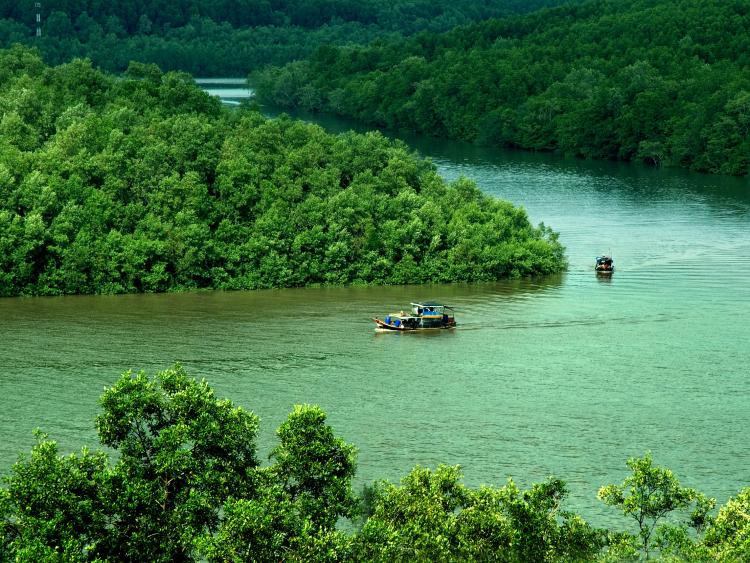Can Gio Mangrove Biosphere Reserve is one of Vietnam’s most special natural conservation areas, with immense ecological and cultural value. Located in the southeastern part of Ho Chi Minh City, this reserve stands out not only for its stunning natural landscapes but also as one of the largest and most diverse mangrove ecosystems in Vietnam. It was recognized as a World Biosphere Reserve by UNESCO in 2000.
1. Location and Features of the Can Gio Mangrove Biosphere Reserve:
The Can Gio Mangrove Reserve is located in Can Gio District, Ho Chi Minh City, about 50 km southeast of the city center. With an area of about 75,000 hectares, this area plays a crucial role in Vietnam’s nature conservation network. It includes mangrove forests, swamps, rivers, and coastal ecosystems, creating a diverse and unique natural landscape.
2. Ecological and Conservation Value:
The Can Gio Mangrove Forest plays an essential role in protecting the natural environment and maintaining the ecological balance of the region:
Environmental Protection and Erosion Control: The mangrove system has the ability to absorb wave energy and reduce coastal erosion. This helps protect coastal residential areas and agriculture from the harmful impacts of natural disasters.
Ecosystem Stabilization: The mangrove forest provides a rich habitat for numerous wildlife species, including various marine animals, birds, and mammals. This ecosystem also helps sustain the food sources for many local communities.
Water Filtration Function: Mangrove forests play an essential role in filtering and cleaning water, improving water quality in the area.
3. Flora and Fauna Characteristics:
The Can Gio Mangrove Reserve is home to many rare animal and plant species, some of which are endemic or endangered:
Animals: This area is an ideal environment for marine animals such as shrimp, crabs, fish, and other aquatic species. Can Gio is also a stopover for many migratory bird species from around the world, particularly seabirds and storks.
Plants: The mangrove forest in Can Gio is home to a variety of plant species, including characteristic mangrove trees such as the red mangrove, black mangrove, and saltwater-tolerant species, which thrive in saline environments.
4. Notable Attractions:
Monkey Island: One of the main tourist attractions in Can Gio. It is home to thousands of wild monkeys, creating a unique ecological space.
Can Gio Mangrove Nature Reserve: A strictly protected area where scientists and experts study mangrove flora and fauna. Visitors can explore and learn about the area’s unique ecosystem.
Can Gio Fish Port and Ecotourism Area: Tourists can visit the local fish port, experience the life of fishermen, join mangrove forest tours by boat, or enjoy fresh seafood.
5.Conservation and Sustainable Development Activities:
Protection and sustainable development are key goals for the Can Gio Biosphere Reserve:
Monitoring and Scientific Research: Ongoing scientific research on the mangrove ecosystem, animals, and plants is regularly conducted to assess conservation status and effective protective measures.
Community and Visitor Education: Programs to promote environmental protection and nature conservation are organized to raise awareness among local communities and tourists.
Sustainable Tourism Development: Ecotourism in Can Gio is growing rapidly but is carefully managed to protect the ecosystem and natural resources, ensuring that tourism creates income for the community without harming the environment.
6.Conclusion:
The Can Gio Mangrove Biosphere Reserve is one of the most important natural conservation areas in Vietnam. With its diverse ecosystem and invaluable ecological contributions, it not only plays a crucial role in environmental protection but also serves as an ideal destination for nature lovers and ecotourism enthusiasts.

